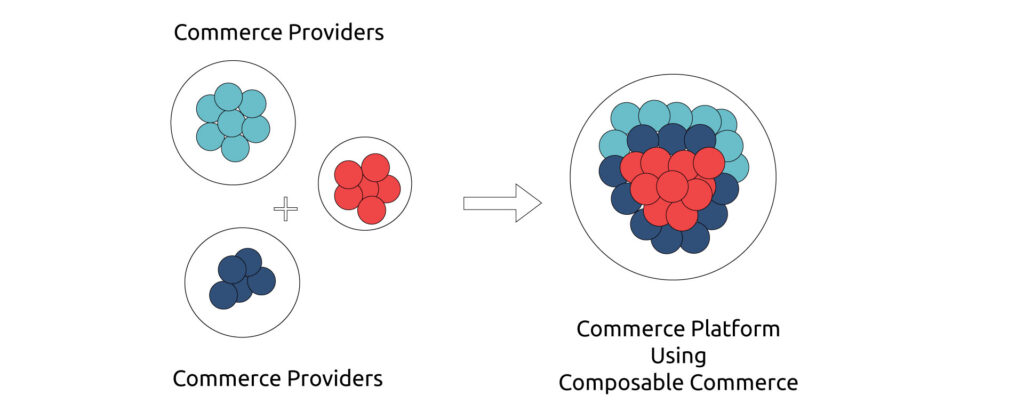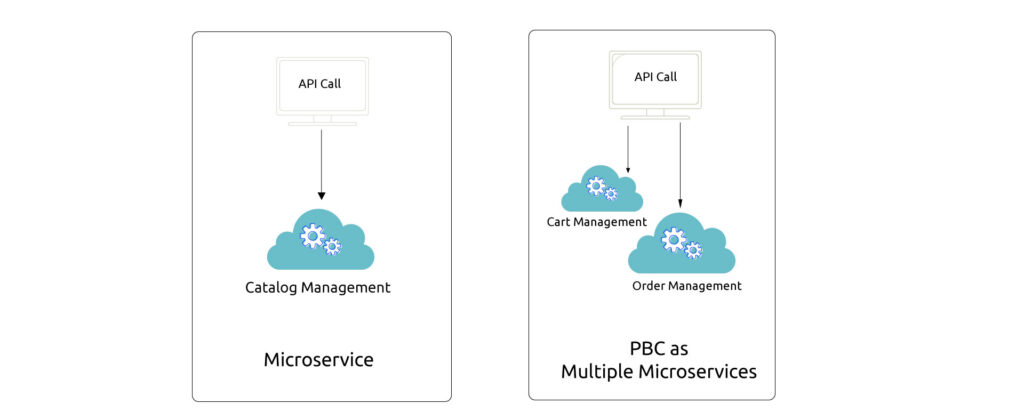Ecommerce solutions have evolved over the past years and the old monolithic models have been in the market for a long time with systems heavily relying on these old monolithic models. With all the functionality tied and connected, one single change would affect the whole system. This approach slowed down the growth of ecommerce platforms as it catered to this dependency; this is how headless architecture was formed. Therefore, by going headless, composable commerce platforms have their front-end separated from their back-end to easily put in any enhancement. Composable commerce has revolutionized the ecommerce world.
To top it all off, a technology called composable commerce came into existence where every module is independently designed and is independent of any other module or functionality. This blog explains composable commerce and its pros and cons.
What is Composable Commerce?
Firstly, to understand what composable commerce is, we need first to understand its need. The one-size-fits-all monolithic solution was made to fit the needs of companies when they first decided to take an online shift. It was a simple and efficient solution for the beginning of the digital era, however, as the companies started to grow, the business and its complexities grew as well. There was a need for a more advanced solution to the challenges, and that is how headless commerce was formed. Headless Commerce decoupled the front end from the back end and created a system where each of these is independently handled. The back end can be separately scaled as the business grows.
Business owners started approaching multiple providers to handle the back-end functionality and migrated to headless commerce for their commerce platforms. What is better than using one good platform offering its functionality for your commerce platform? Using multiple platforms and their best functionalities. This is what composable commerce precisely does. It is a concept that revolves around taking the best-packaged business capabilities (PBCs) from various vendors and combining them to make a single platform. Look at the figure below to understand the concept of composable commerce.
 Composable Commerce Architecture
Composable Commerce Architecture
What is a PBC?
A Packaged Business Capability or PBC is a single feature or capability that is typically a third party. An example of a PBC is a shopping cart or promotion service. Now, if this is what a microservice precisely does, so how is a PBC different from it? A microservice is a single component performing a single functionality, however, a PBC can be a single API call bundling together the functionality of multiple microservices. Therefore, combining PBCs to create a single commerce platform is composable commerce. Look at the figure below for a visual depiction of differences between microservices and PBCs:
 Microservices vs PBCs
Microservices vs PBCs
Benefits of Composable Commerce
The most significant benefit of this approach is the ease it puts into your commerce platform. You might be using composable commerce already and not even know it. Let us look at the pros closely.
Business centricity
You can use a single business functionality without having to rely on the whole technology stack.
Pre-composed functionality
Having the ability to make room for best market practices and pre-composed and tested functionality.
Modularity
Having a single vendor for every business functionality can be challenging in some cases. Composable commerce gives you the leverage to have more robust and comprehensive functionality.
No Limitation of Single System
You have more room to try and implement new and advanced features without affecting the whole system.
Efficient & Cost-effective
Having modern technology freedom increases efficiency and reduces costs associated with system management and staffing.
Challenges of Composable Commerce
Everything that comes to you comes with a price, right? Similarly, composable commerce has its challenges for users.
Difficult to Keep Uniformity
Maintaining uniformity across all the platforms. It can be a challenging process for business owners to keep up with technological trends.
Time and Money Cost
Keeping up with multiple vendors can cost you a lot of money and time.
Keeping up with Vendors
Maintaining consistent interaction between multiple vendors is difficult.
UpStart Commerce and Our Approach
Composable commerce is a great new approach, and every business should make the shift. If you are using a headless commerce platform, you are already on your way to adopting the composable approach for your business. We at UpStart Commerce help you build your commerce platforms as you want. We provide you with the best market functionalities for your business and help you grow your commerce platform as your business evolves. Connect with one of our experts today to get more information on Composable Commerce – the latest technology trend.
